12 December 2022
THIS MATERIAL (INFORMATION) WAS PRODUCED, DISTRIBUTED AND (OR) SENT BY A FOREIGN AGENT, INTERREGIONAL NON-GOVERNMENTAL HUMAN RIGHTS ORGANIZATION “MAN AND LAW”, OR CONCERNS THE ACTIVITIES OF A FOREIGN AGENT, INTERREGIONAL NON-GOVERNMENTAL HUMAN RIGHTS ORGANIZATION “MAN AND LAW”
Last week a series of events dedicated to the World Children's Day took place in St. Petersburg. Four days included an interregional conference, a three-day seminar, a master class for parents, a dialogue platform and a social fair. The main topic of the conference and seminar: sustainability in conditions of instability and new challenges in the protection of children's rights. The conference gathered more than sixty participants from 17 regions of Russia.
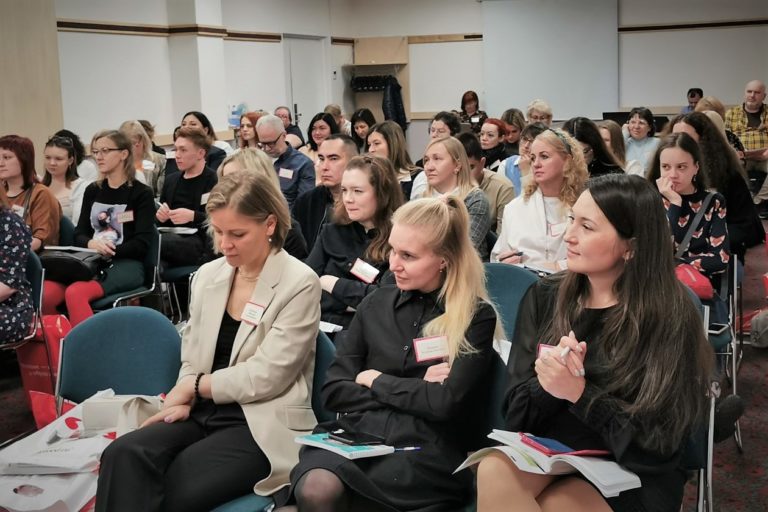
“The rapidly changing reality poses new challenges to NGOs. We will look together for answers on how to survive, develop and be useful in this unstable time,” said Olga Vasileva, a member of the team of organizers of the project “Different children – equal rights!”, in the opening speech.
Maria Cheremnykh from Perm raised the topic of overprotection at school and at home in her speech.
“We have not developed a culture of subjectivity – we rarely ask the opinion of a child, what clothes to buy, what he would like to eat. Parents choose everything for the child. It’s time for adults to accept the child as an independent person, their role is to help in his development and ensure safety. The child is primarily a person, not the property of the parents. He has rights, and he should have the right to choose.
Teachers can also use a non–standardized approach, but offer different options to different children. Now there are techniques and technologies for this. In my opinion, the class-based system, which does not take into account the characteristics of each child, has outlived itself. We need more choice, dialogue, and not a monologue from top to bottom.”
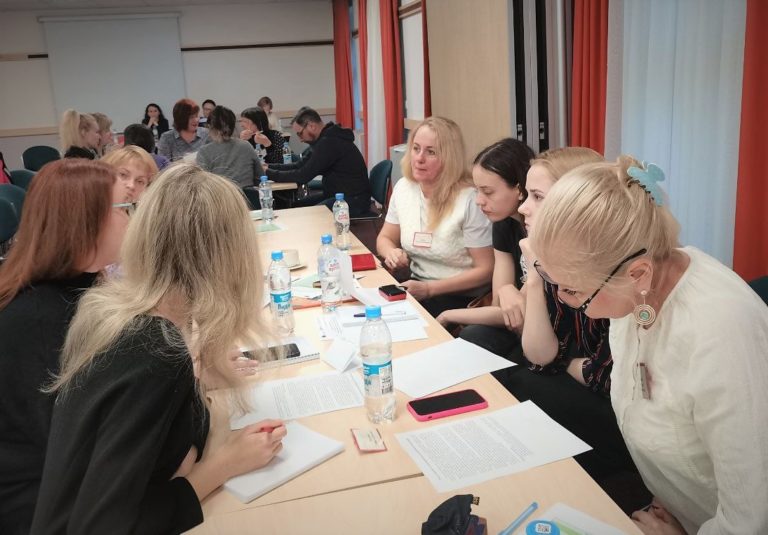
Maria Oborina from the “GRANI” Center outlined new risks and challenges for NGOs: increased external pressure (complex reporting and excessive administrative burden, hate speech against NGOs, mobilization), difficulties with resources (finances, people, media support), complication of the problems of beneficiaries, etc. Such conditions can be characterized as “multiple vulnerability”.
“I recently read an article by a psychologist, he spoke about three typical, “primitive” reactions to a threat – to run, to fight, to freeze before challenges. But, we can’t stop and freeze, it’s dangerous. Therefore, it is important to predict risks and think through possible solutions in advance.”
Among them, Maria singled out the following: cooperation, including the creation of temporary associations and the exchange of resources; use of the strength of weak ties (the circle of “friends of our friends”); social entrepreneurship and partially self–supporting activities; increasing the expertise of the team and training to increase efficiency; greater flexibility and creativity – the situation is changing quickly, and it is important not only to track risks, but also to see new opportunities.
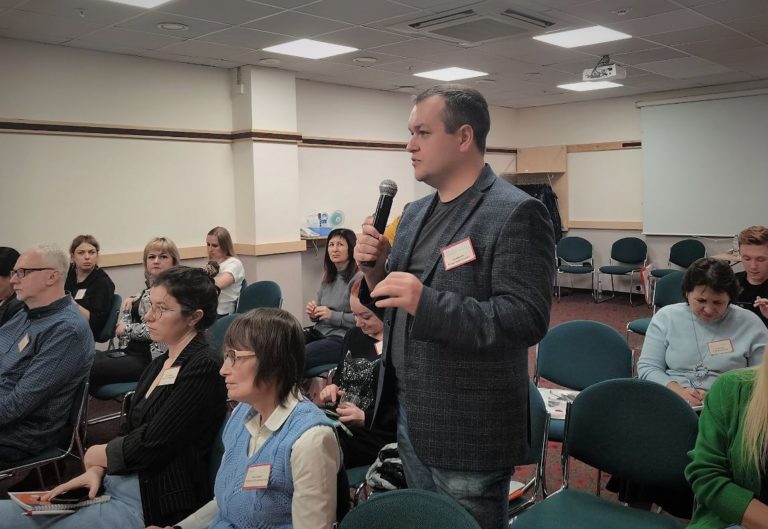
The topic was continued by a consultant and strategic development coach Vadim Fedorov. He himself once worked in an NGO and knows the sector firsthand.
“The same moan is heard everywhere – everything is terrible, there is nowhere to put a foot for stability. But we can look at the business experience, for example.
How are your business processes structured? How do you create value for your beneficiaries? Is it always optimal? There is such a concept of a “minimally sufficient product” MVP, when you create a new service with small expenses, test it with a target group, then it is finalized, and so on.
Mission, values, vision – do you just have beautiful words, or a powerful basis for motivation? Do you manage the corporate culture? Do you have a constant cycle of team development? Do you use automation, which allows you to save resources, and cooperation, which helps to share resources, to do more than one by one?”
In conditions of uncertainty, Vadim recommends narrowing strategic planning to six months, a maximum of a year. Longer-term plans may become hopelessly outdated before reaching the middle.
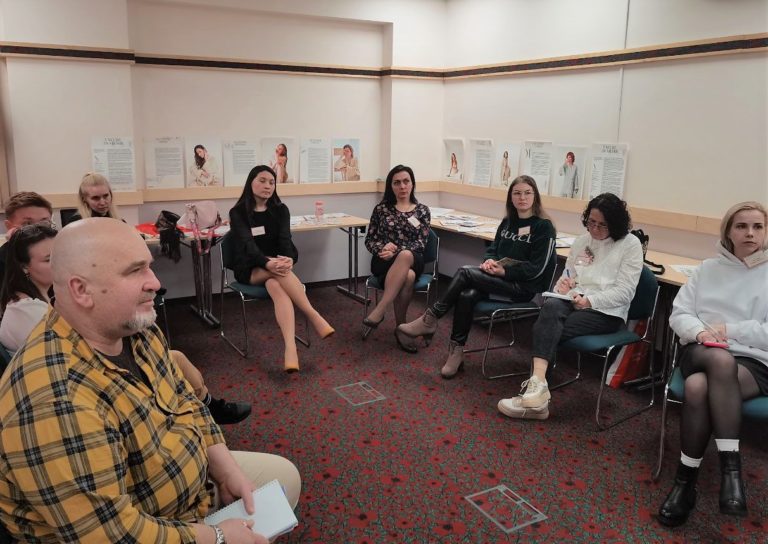
Veronika Odinokova from the St. Petersburg organization “Stellit” spoke about the successful experience of the coalition against sexualized violence and exploitation of children. At the moment, it includes participants from 13 regions.
“We complement each other: all members of the coalition are engaged in the same topic, but in different aspects, focuses of activity. To work out the goals and principles of the coalition is what we started with. We agreed at once what we mean by these or those terms, what our common position is. Previously, we missed the moment of shared values, but if we do not agree “on the shore”, it then pops up, can lead to tension or even collapse. Then we clarified the areas of cooperation where we can be useful to each other.”
With the support of the project “Different children – equal rights!” a new website has been created www.stopsec.com . In the high traffic of the resource, where you can download the best materials on the topic for free, Veronika sees a sign: “So we are moving in the right direction, our materials are in demand, our activities are needed. It gives strength and confidence.”
Nevertheless, in the current conditions there are difficulties with resources. Veronika admits that she has written a lot of grant applications for the further development of the coalition, but so far none of them has received funding. She and her colleagues are “thinking in the direction of social entrepreneurship” – to transform the best methods and materials into paid training programs, to find buyers for them in the face of state institutions.
Other speakers also spoke about the importance of building partnerships, for example, Lyudmila Zolotareva from the Association of Foster Families of the Republic of Mari El “MariA” and Ekaterina Osipova from the Association for Assistance to Children with Disabilities in the Perm Region, the Dedmorozim Foundation.
It is assistance in the creation of NGO coalitions and support for their sustainability that is one of the main priorities of the project “Different children – equal rights!”.
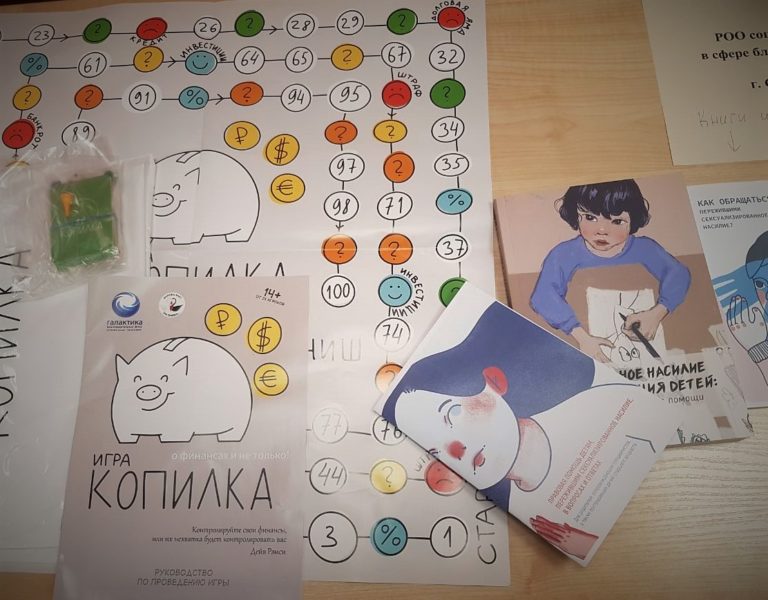
Among the speakers were representatives of NGOs working with different vulnerable groups such as orphans, migrant children, children with disabilities, children who witness domestic violence, children of parents in custody, and others. Meanwhile, with such a variety, there was a lot in common.
In the second half of the conference, the participants were divided into three groups preparing proposals for the development of NGOs and coalitions. These proposals formed the basis of the conference resolution.
The first group focused on the needs of target groups and how to include them in the implementation plans of government programs. The second focused on finding opportunities for the development of children’s NGOs. Finally, the third was looking for points of application of the forces of adolescents themselves, youth, as well as parents and representatives of target groups in solving community problems.
A social fair was held simultaneously with the conference. It was possible to get acquainted with the exhibition of women’s stories from the Nizhny Novgorod Women’s Crisis Center, play a game for teenagers “Piggy Bank” on financial literacy, learn about other NGOs working with children and families, take their brochures, booklets and leaflets with you.
“For me, the conference has become a place of strength. There were a lot of new thoughts and ideas, what is practically applicable, what can be put in the piggy bank. I’m not talking about connections and contacts,” one of the participants sincerely shared her personal results.
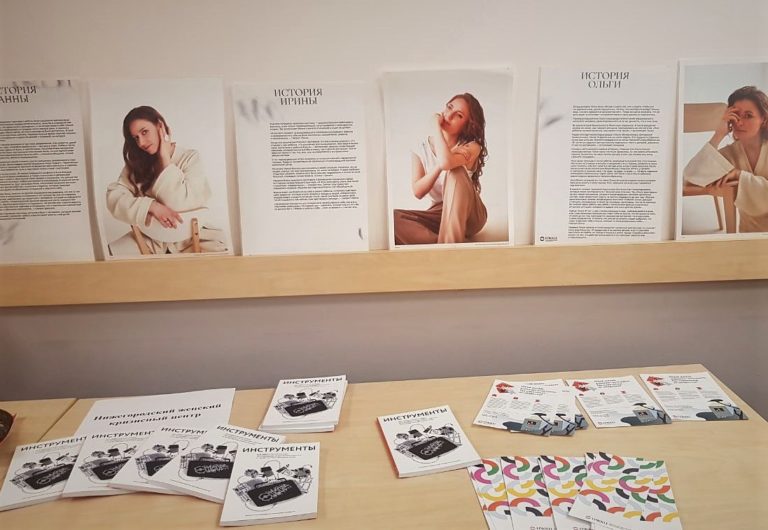
The next day an interregional seminar for NGO managers, employees and volunteers “Crisis management and strategic planning of NGOs in conditions of instability and new challenges in the protection of children’s rights” started.
The three-day program turned out to be rich: theoretical blocks were replaced by practical work in groups and case analysis. And the seminar ended with an interactive storytelling training by the director and actor of the Theater.Doc Konstantin Kozhevnikov.
As at the conference held the day before, the participants asked the main question: what should NGOs do in conditions of “multiple vulnerabilities”, instability and new challenges?
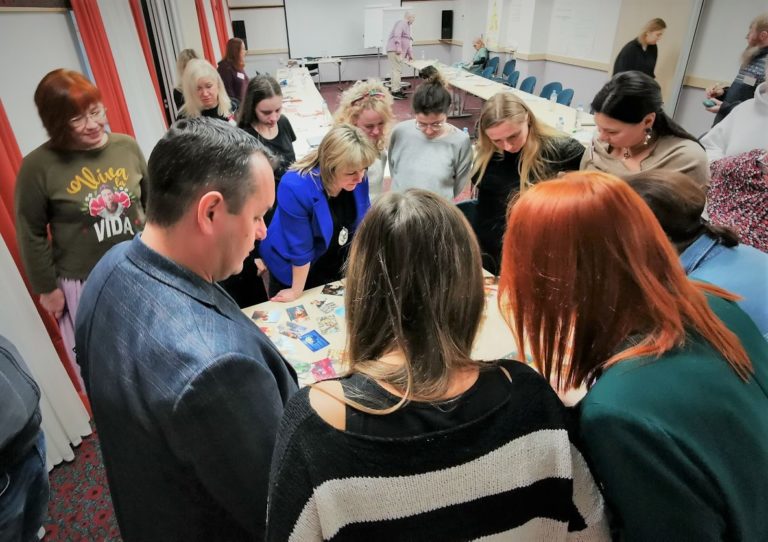
The seminar was opened by Svetlana Makovetskaya, one of the leading Russian experts in the field of effective development and management of NGOs.
“The world around us is changing so fast that we understand that many old schemes no longer work. How to combine resilience and flexibility?
The state “doesn’t love” NGOs any more, the grant model is vulnerable, many “immobilizing” laws have been adopted, anything you do is your risk. Difficulties with financing, everything is getting more expensive – NGO employees are getting poorer. In these conditions, ethical conflicts and the psychology of guilt are added, many of us feel like losers.
Fatigue multiplies, risks multiply, habitual response models do not work. What to do with such a multiple vulnerability?”
Makovetskaya suggests not to use the usual anti-crisis response, cutting everything in a row, but to use the “principle of antifragility”: to look for the strengths and processes of the organization, focus on them, and not on weaknesses.
“What is the usefulness of your organization? What is the most important thing? Perhaps it’s time to give up what is not important, some types of activities, to dump the ballast. Leave what you are good at, what is important both to you and to those for whom you work. What processes are not optimal, what can be improved? Experiment more, test more.
The second focus should be on restoring oneself, inner development. If you are not in good shape, if the organization does not have the potential, you will help few people.”
However, focusing on strengths does not mean that you do not need to work with vulnerabilities. To begin with, it is important to understand which threats are real, and which are a “horror story in your head”. A whole group of strategies in this area was considered at the seminar: “protection from danger”, “exclusion of danger”, “avoidance of danger”, “prevention of damage from danger”, etc.
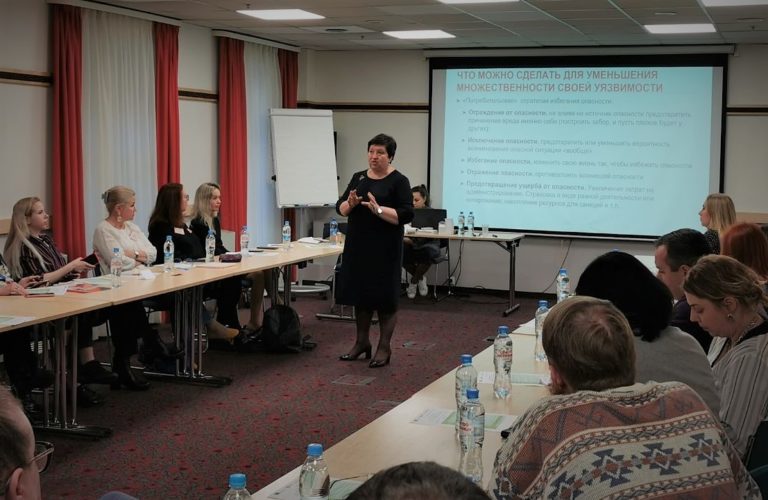
Makovetskaya says that the idea of a “permanent coalition at any cost” is not always a good option.
“In this case, the coalition coordination center, that invests more and often incurs large costs, burns out. There are frequent cases of consumerism, toxic partnership.
Sometimes it is worth considering the idea of a situational partnership when there is a local coincidence of interests in solving some task. Think about the possibility of “making friends with benefits” here and now. Sometimes you may be united not by common values with partners, but by service connectivity, usefulness for the beneficiaries.”
Another point of support is to develop the organization’s capabilities through interaction with the audience. For example, use the experience of peer–to-peer paraconsultants, when your target group itself becomes translators of values and sources of change.
“If you want the flexibility of the system, you need to delegate more, move the decision-making center to the lowest possible level for this task. Of course, for this, the culture of the organization must be developed so that a person has the right to make a mistake. Try new things, don’t run into one route, let there be different scenarios.”
In the second part of the block, the participants, divided into groups, worked on applying theory to solving specific cases.
The day ended with a conversation about the values of NGOs, children’s rights and human rights. In difficult times, it is the reliance on values that can be an important factor of sustainability for both individual NGOs and coalitions.
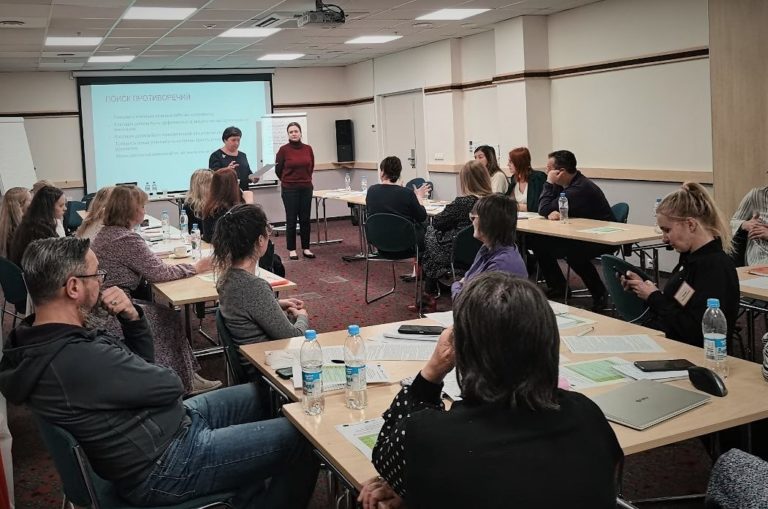
The second day included a lot of practical work under the guidance of the coach on organizational effectiveness Vadim Fedorov. The groups delved into strategic planning within coalitions, trying out various tools: metaphorical maps, the field of problem-solutions, the “Dilts Pyramid” and the “Competence Matrix”.
“There is a dolphin on my map. The coalition is a highly intelligent living organism that must be flexible, fast, gregarious in order to be successful,” said one of the participants.
“Everyone’s cards are different, and the “shirts” are the same. Look for common things among different ones,” Fedorov summed up the “metaphorical circle”.
“In these times of uncertainty, I recommend planning a strategy for 6 months so that it answers the question: where are we going on this stretch of the road? This period allows you to be more flexible, to experiment more in a cycle: hypothesis – research – result.
So, you have six months to make the coalition “alive”.
Fedorov prefers to call the problems “the norms of the present”, and the goals for their solution “the norms of the future”. He asked to choose no more than three for the next six months and work with them. Among the options developed by the groups were, for example, the following: “acute financial insufficiency”, “waiting for the leader (low subjectivity of employees)”.
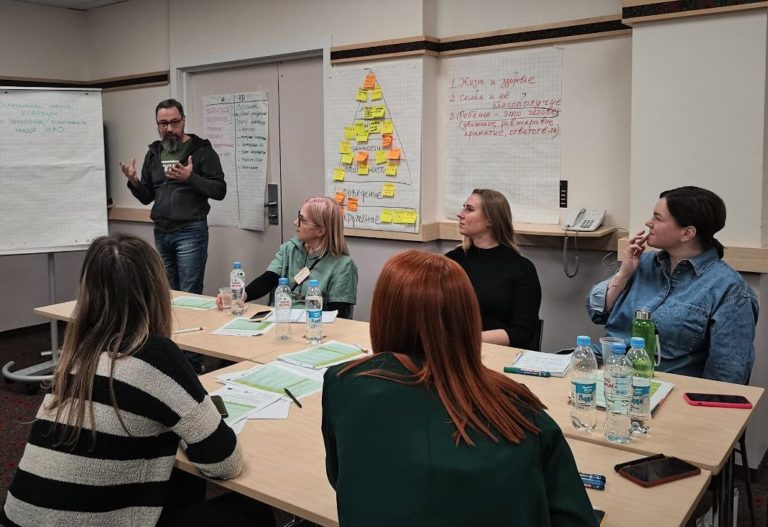
As the “floors” of the Dilts pyramid filled up with “environment”, “behavior”, “abilities”, “values”, “identity” and ”mission”, the groups made interesting discoveries. Here are some mission options: “To become stronger together to help”, “Changing ourselves, changing the world”.
The pyramid was “filled” with multicolored stickers: inside they glued what was available, outside – what was missing. The results of some groups were similar to Christmas trees.
“It is important that there is no parasitic effect in the coalition. It may be worth introducing different statuses, for example, members and associate members. It is always important that each organization makes some kind of contribution: money, premises, human resource, information. Even if the contribution is small, you need to get used to not only receiving, but also giving.
In general, the most important thing for the coalition is what I call “the tse-tse fly”: values and goals. The first is what is important to us, the second is why we work together, where we are moving.
No wonder that mission, identity and value system are at the top of the pyramid. If there is a coincidence in this matter, it is good. Otherwise, it will be “Swan, Pike and Crayfish,” Fedorov summed up.
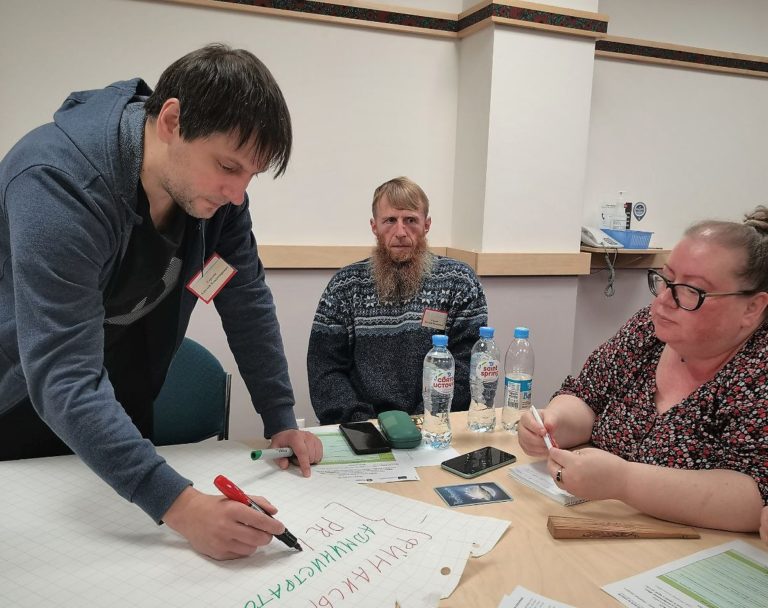
On the last day of the seminar, a memorable event was a storytelling training, held by Konstantin Kozhevnikov, director and actor of the Theater.Doc. He said that he had began to share useful knowledge with representatives of the non-profit sector after working on the play “NGO members”:
“Actors are a very closed group, we are more focused on our roles and ourselves, we even communicate mainly in our workshop. Rarely do we have time to immerse ourselves in what others are doing outside of the acting community.
And it was only when we started working on the play in the theatre, learning about the activities of NGOs, met with outstanding people from the human rights sector – we realized what a colossal and important work this is.
And I decided to share storytelling skills – storytelling technology, so that NGOs could achieve great success in communication. After all, people like to listen to stories.”
In the past, the exact experience necessary for survival was transmitted through stories. Today, stories are a source of emotions and meanings. Konstantin believes that if we want to touch more people with our story, we must talk about basic, universal values.
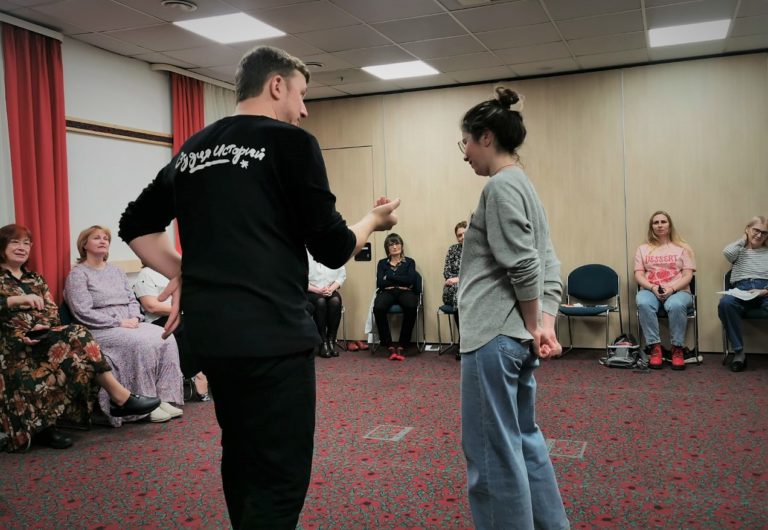
“For example, fear for your loved ones is familiar to almost everyone. I distinguish three parts – the basic emotions of storytelling. “Fear” is something that is associated with survival, struggle, overcoming. The ancient part of the brain – the “reptilian brain” – is responsible for this.
“Sex” – everything related to relationships, attraction, romantic feelings, family. Nature has put in us an interest in this topic for procreation. The last part is “laughter”, the use of humor in stories is an important tool. Probably, most of all we are touched by stories that combine several emotions, where there is “laughter through tears”.
If we work with a certain audience, we should know its values well, how this group of people lives, what their characteristics are. For example, officials, the elderly and teenagers should tell the story in different languages, based on different values, and place accents in different ways.
There was a lot of interactivity at the training. Then the participants ran from chair to chair, depending on what they responded to (“I love”, “I hate”, “I dream about”) – to see which values are most popular in the audience.
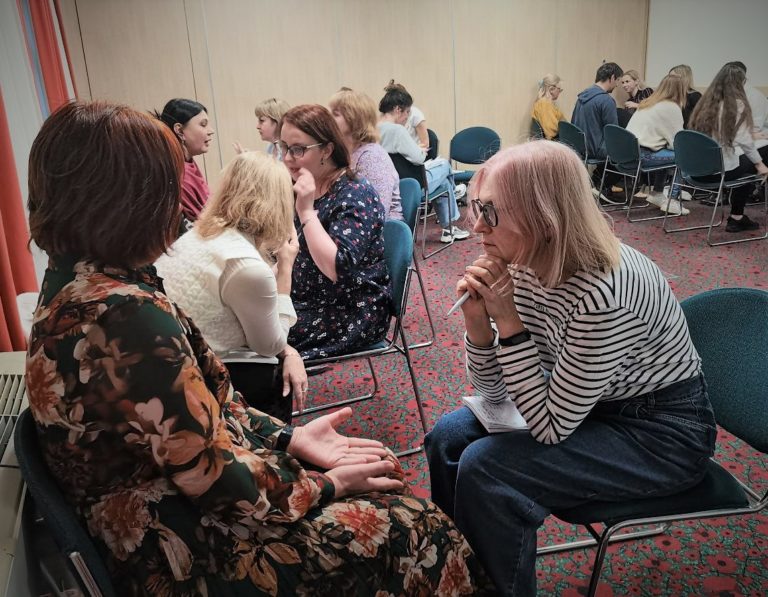
Then, the hall turned into several “compartments” for four people, where fellow travelers shared stories related to NGOs. Then the stories were retold again, and one from each “compartment” was presented to everyone. The participants had the opportunity to discuss which story “catches”, what works well in the story, and what can be improved.
In addition to the standard structure of storytelling: exposition, plot, main part, climax and denouement, it was important to have conflict and contrast, dynamics, as well as attention to detail, allowing you to visualize the picture and feel the intensity of emotions, according to one of the participants, “so that a movie arises in your head.”
Konstantin spoke about four main types of conflict: “me and the other”, “me and others”, “conflict with oneself”, “me and the world”.
“Conflict is a contradiction when the heroes do not have the same goals, or there is a struggle within one person. Sometimes an internal conflict can escalate into an external one. The ideal story is almost always associated with the unpacking of the conflict, it is the confrontation that creates tension and leads to the transformation of the hero.”
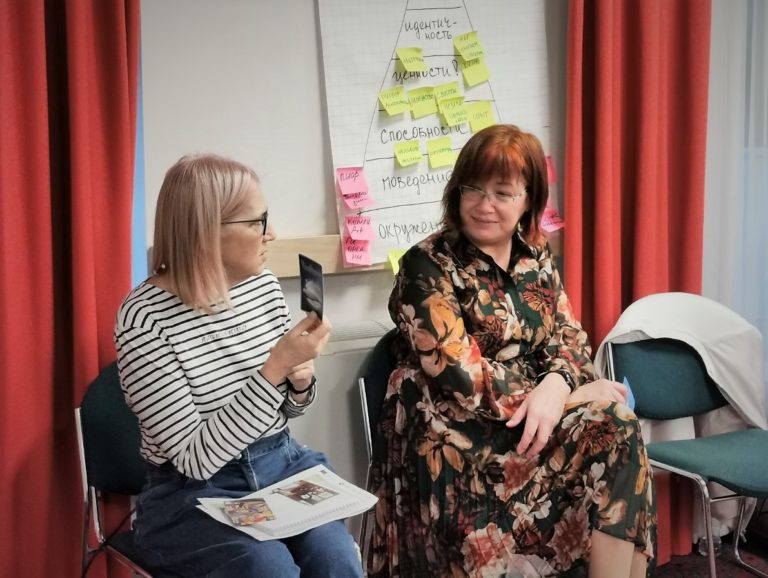
Summing up the seminar, the participants noted how important it is after the coronavirus “era of webinars” to gather in person in order to feel the cohesion and energy of like-minded people. For many participants, the discussed topics and the selection of speakers were important.
And one of the participants shared a personal story:
“In general, the weekend is a sacred day for me. I thought, between you and me, that I would stay here on weekdays, and I would skip Saturday. But today is Saturday, I’m here and I’m happy. A supportive community where you can say what you think, find a foothold is a place of strength.
And here I found a new friend, as if we have known each other all our lives, we will continue to be friends further. Thank you.”
Alexey Sergeev

